Abstract
For a linked marker locus to be useful for genetic counseling, the counselee must be heterozygous for both disease and marker loci and his or her linkage phase must be known. It is shown that when the phenotypes of the counselee's previous children for the disease and marker loci are known, the linkage phase can often be inferred with a high probability, and thus it is possible to conduct genetic counseling. To evaluate the utility of linked marker genes for genetic counseling, the accuracy of prediction of the risk for a prospective child with a given marker gene to develop the genetic disease and the proportion of families in which a particular marker locus can be used for genetic counseling are studied for X-linked recessive, autosomal dominant, and autosomal recessive diseases. In the case of X-linked genetic diseases, information from children is very useful for determining the linkage phase of the counselee and predicting the genetic disease. In the case of autosomal dominant diseases, not all children are informative, but if the number of children is large, the phenotypes of children are often more informative than the information from grandparents. In the case of autosomal recessive diseases, information from grandparents is usually useless, since they show a normal phenotype for the disease locus. If we use information on the phenotypes of children, however, the linkage phase of the counselee and the risk of a prospective child can be inferred with a high probability. The proportion of informative families depends on the dominance relationship and frequencies of marker alleles, and the number of children. In general, codominant markers are more useful than are dominant markers, and a locus with high heterozygosity is more useful than is a locus with low heterozygosity.
Full text
PDF

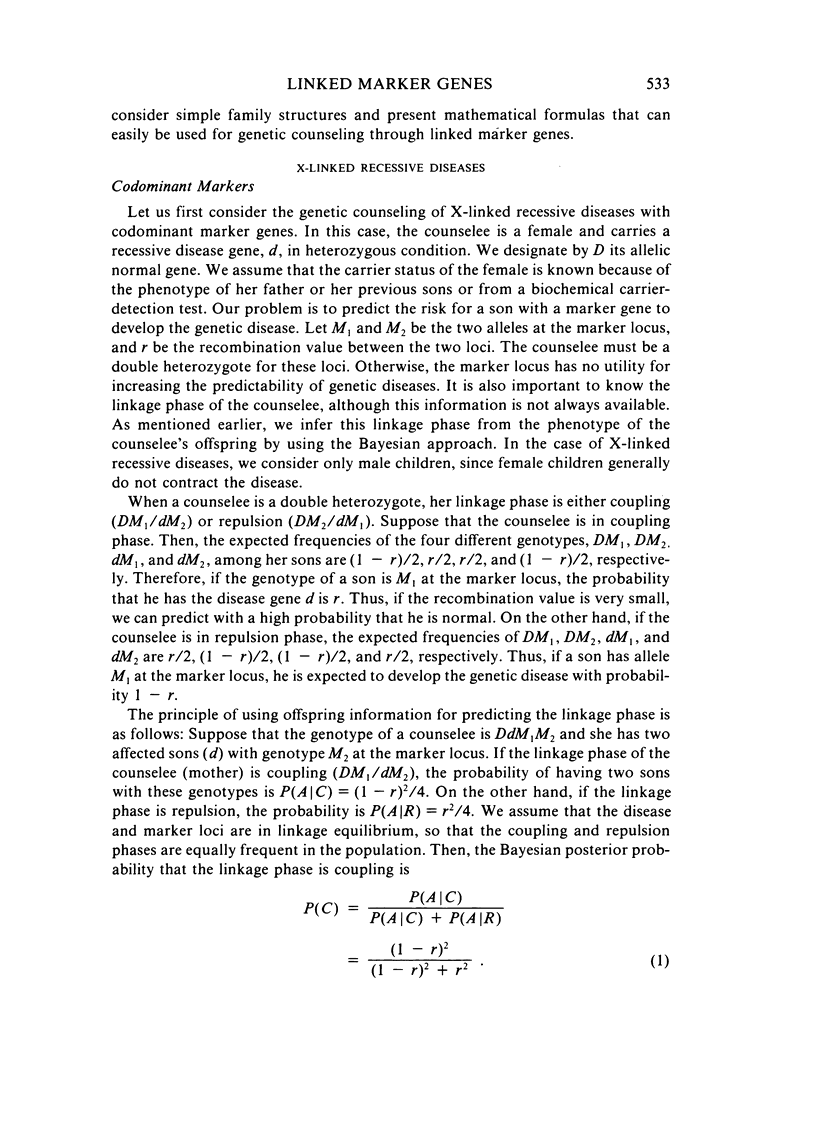

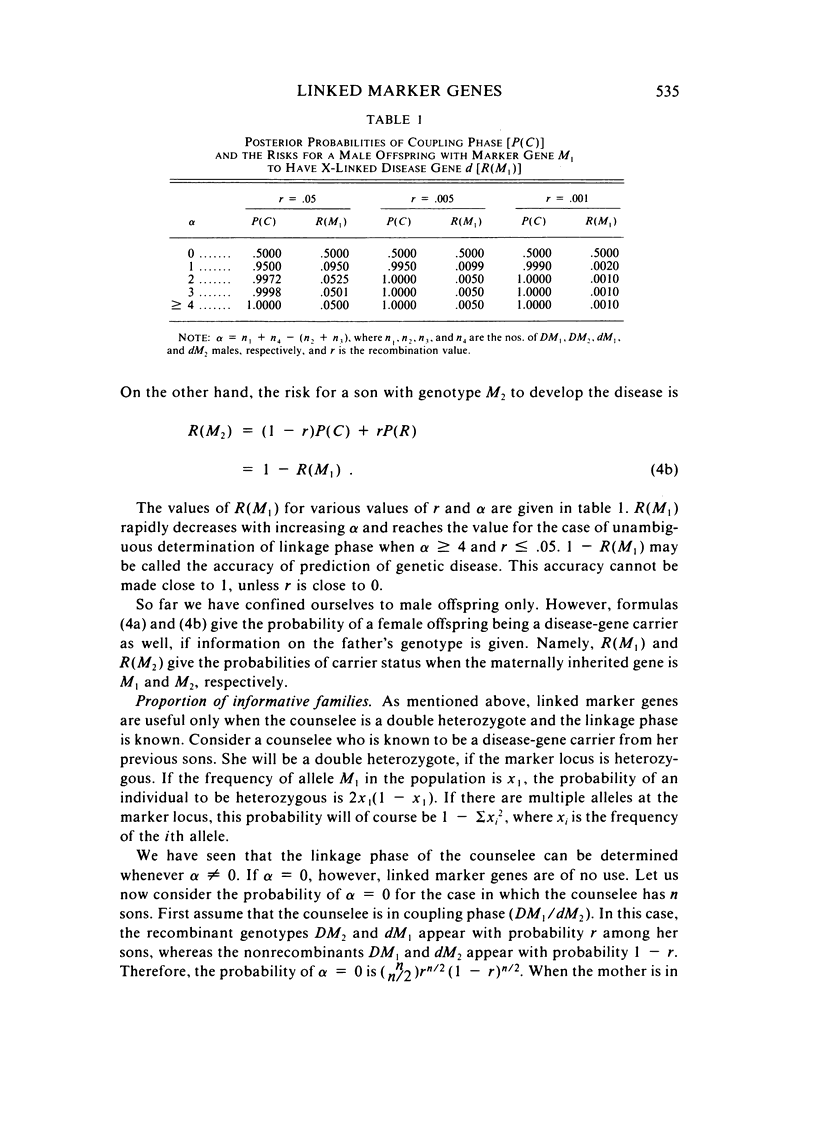
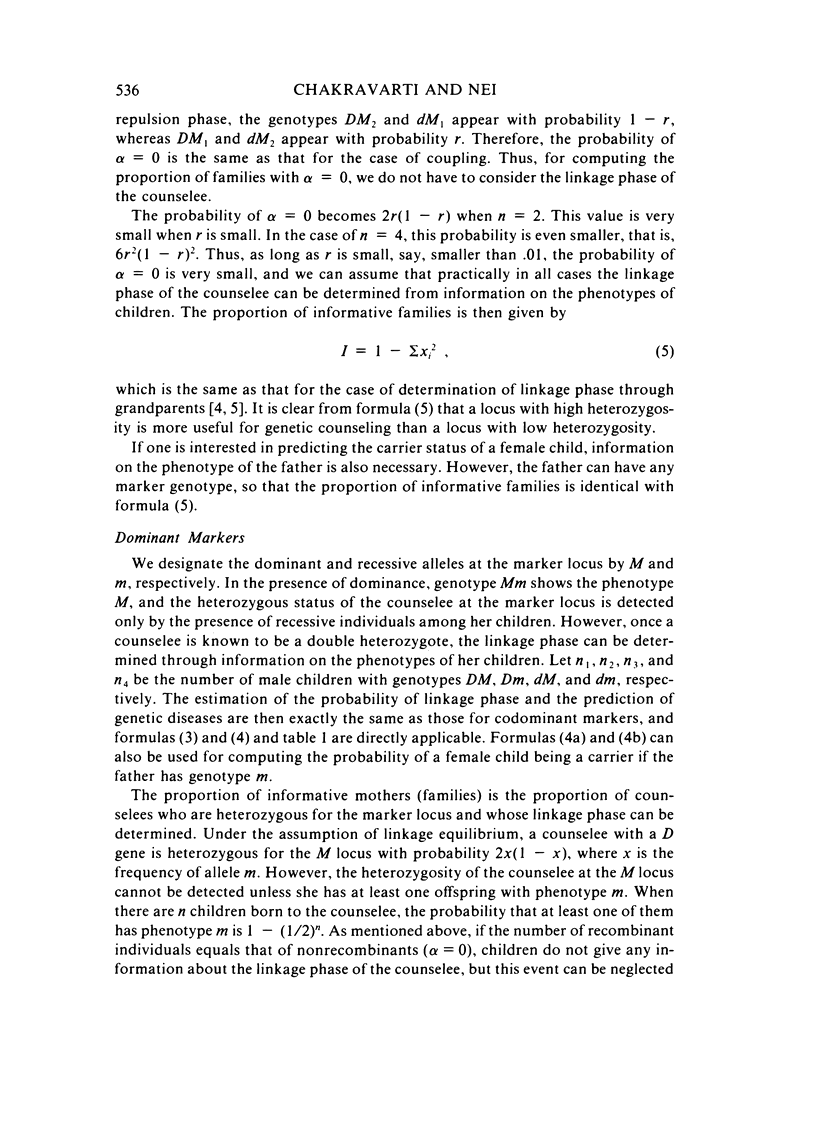
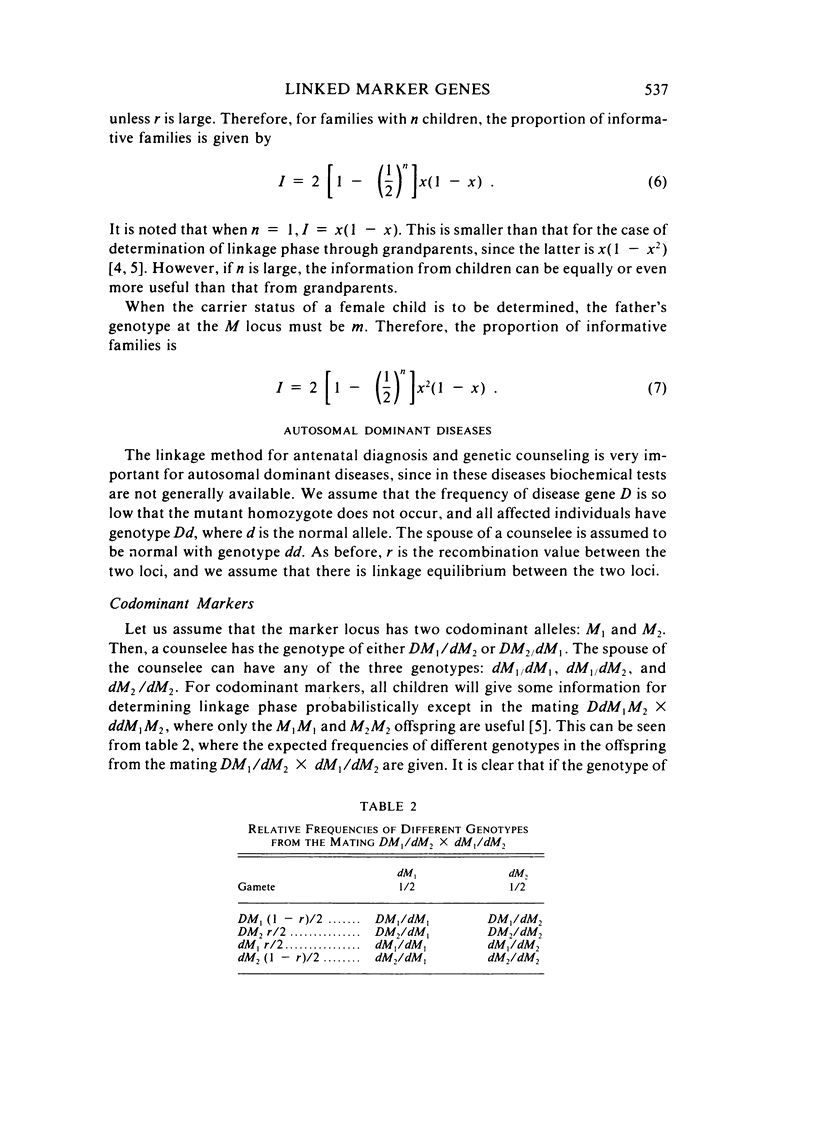
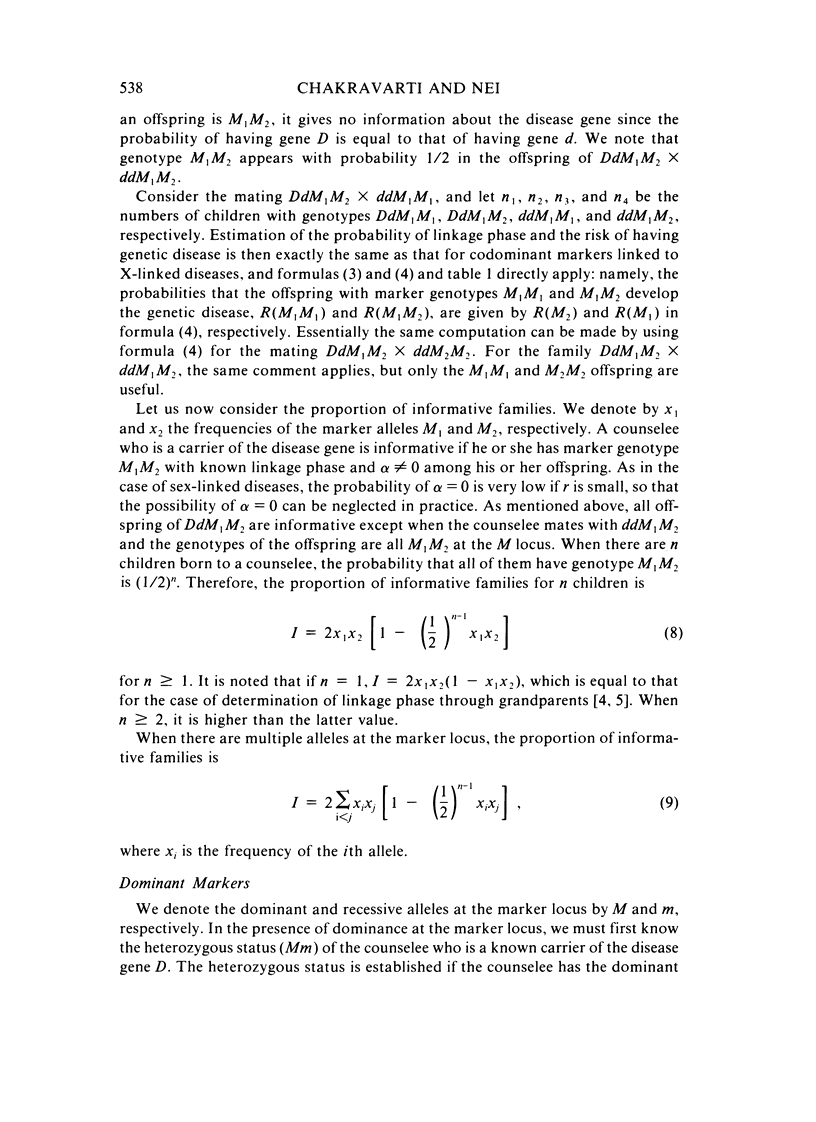
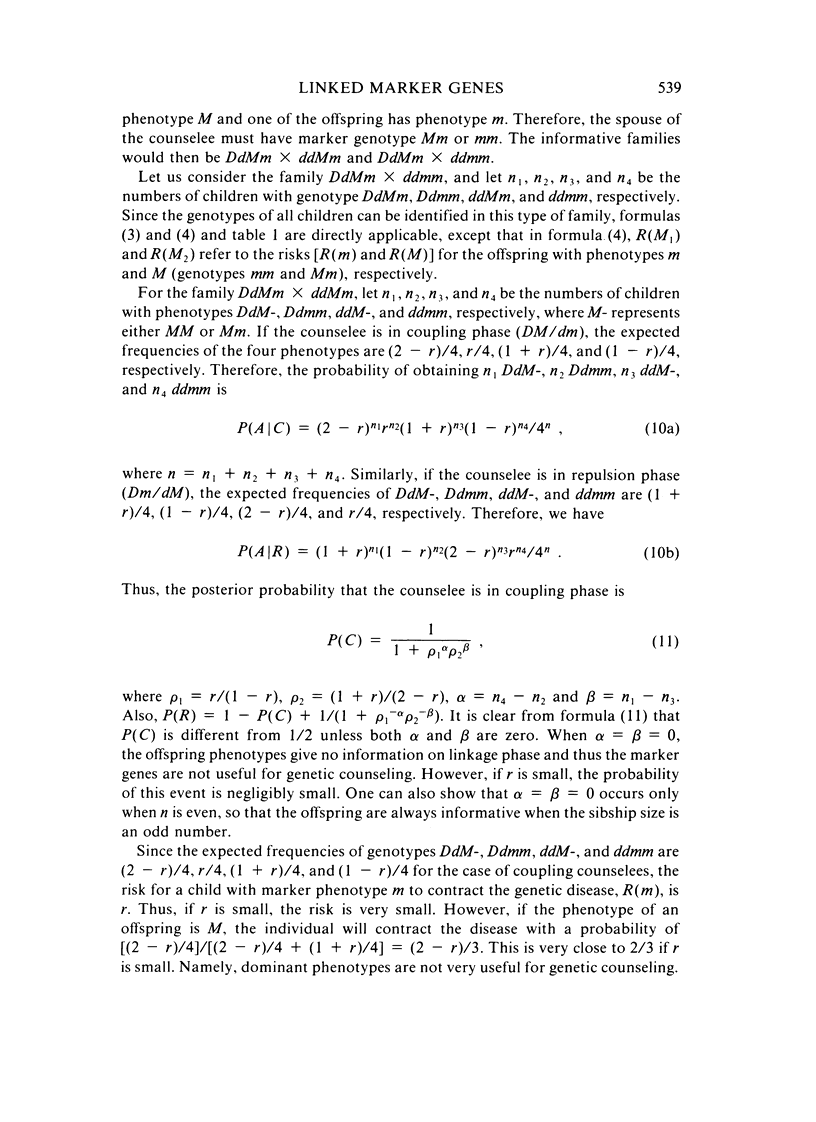
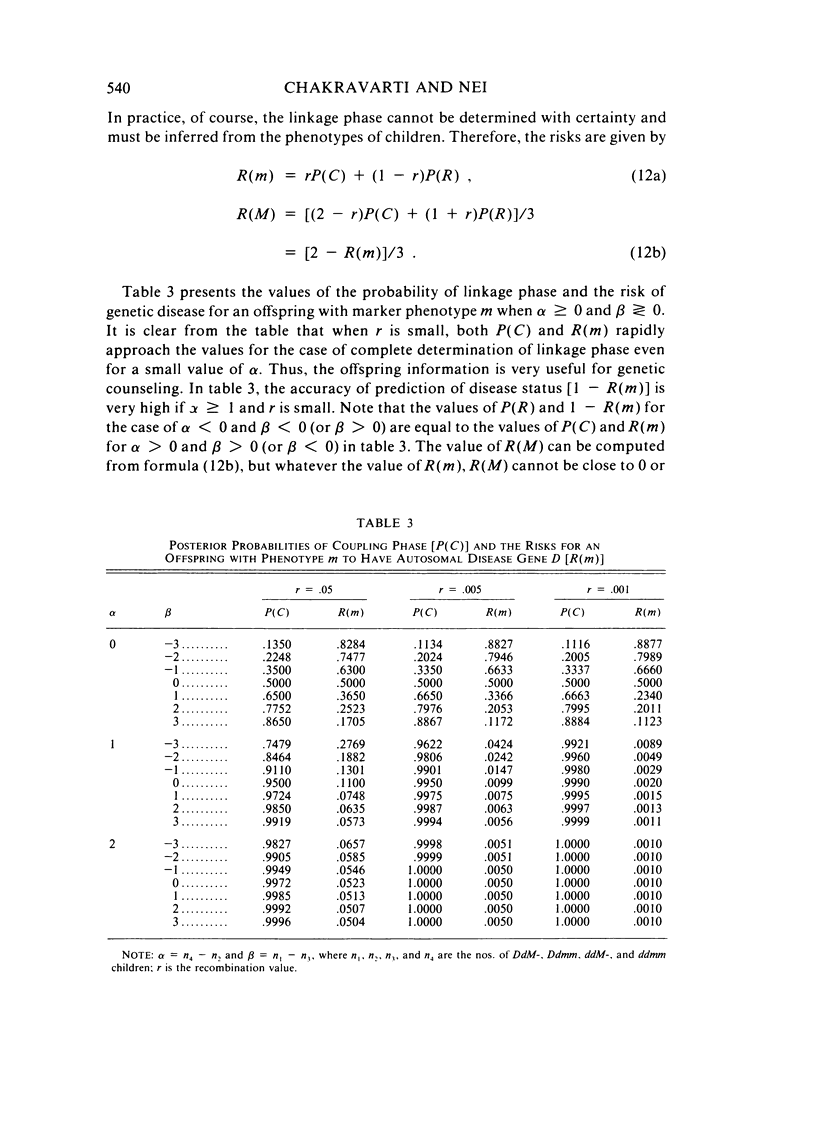
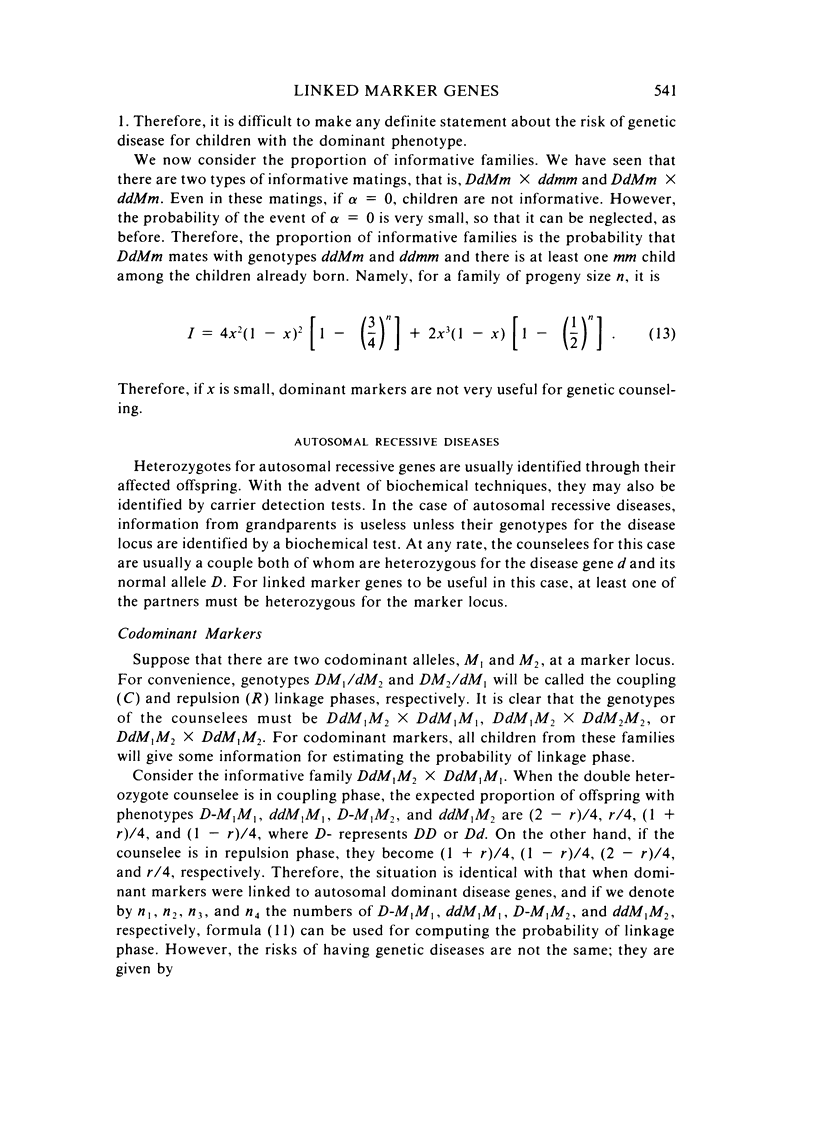
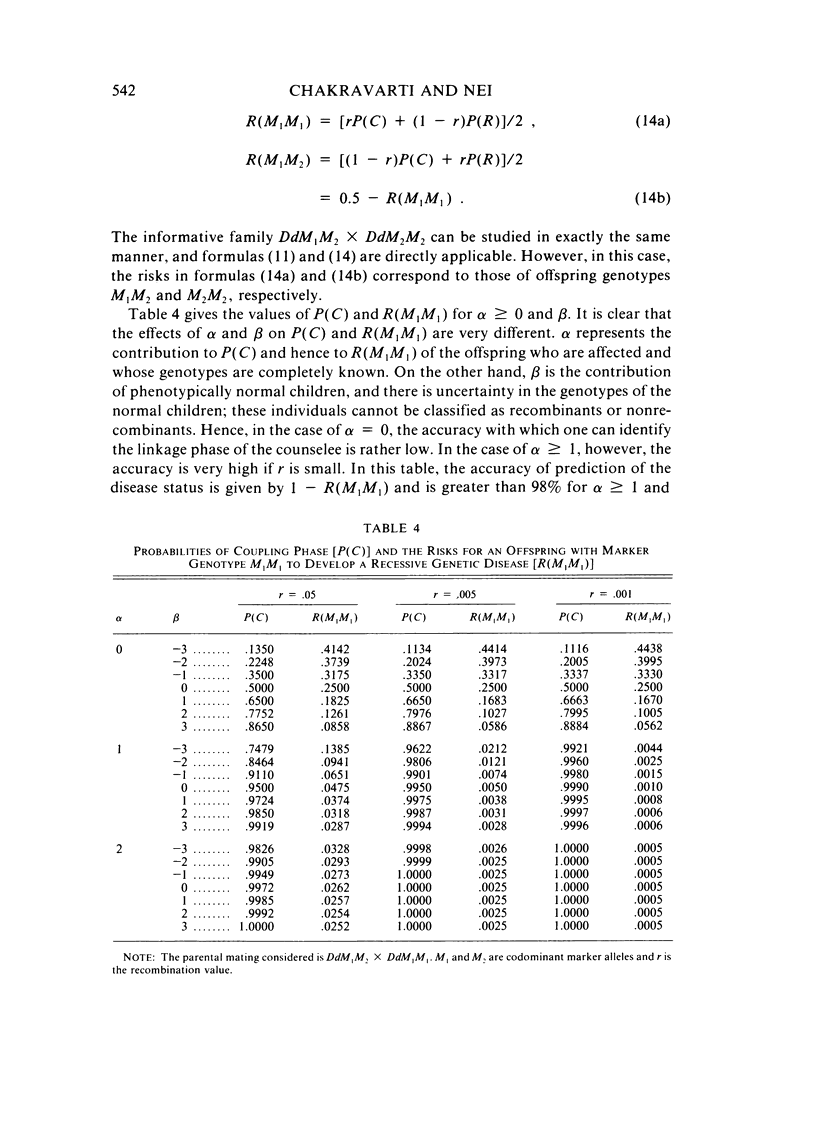
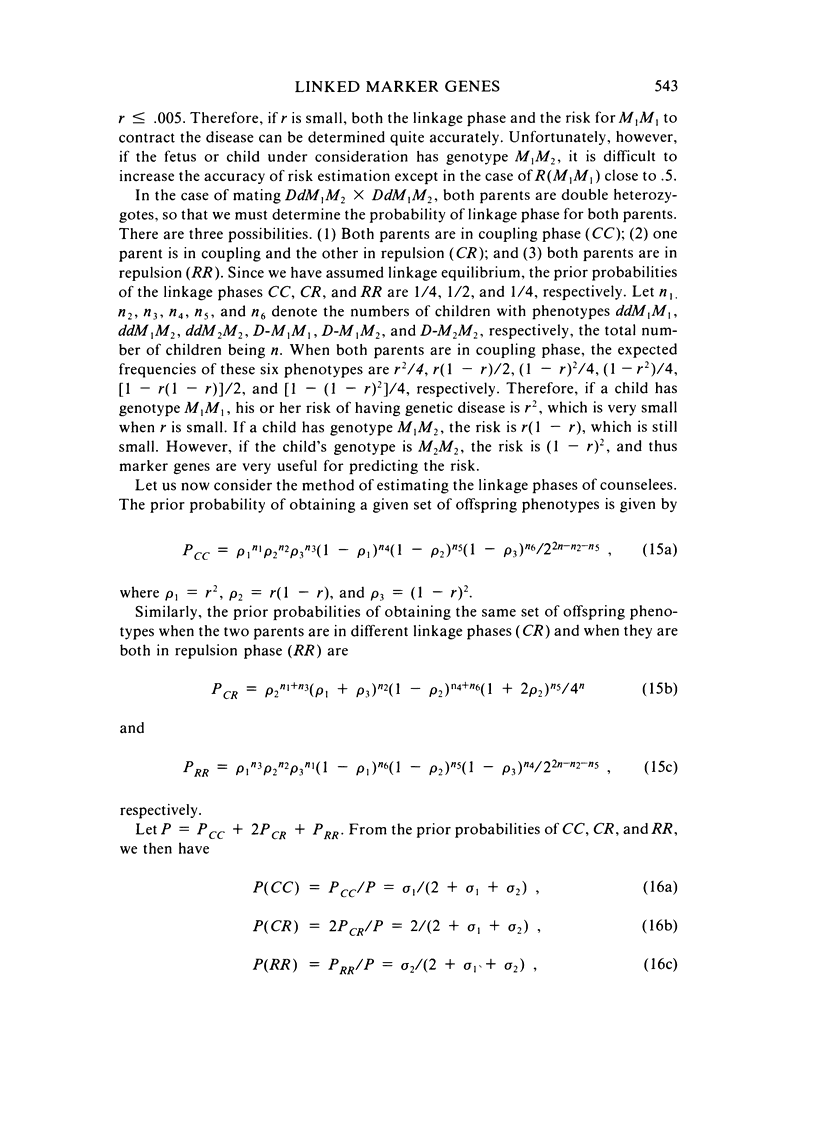
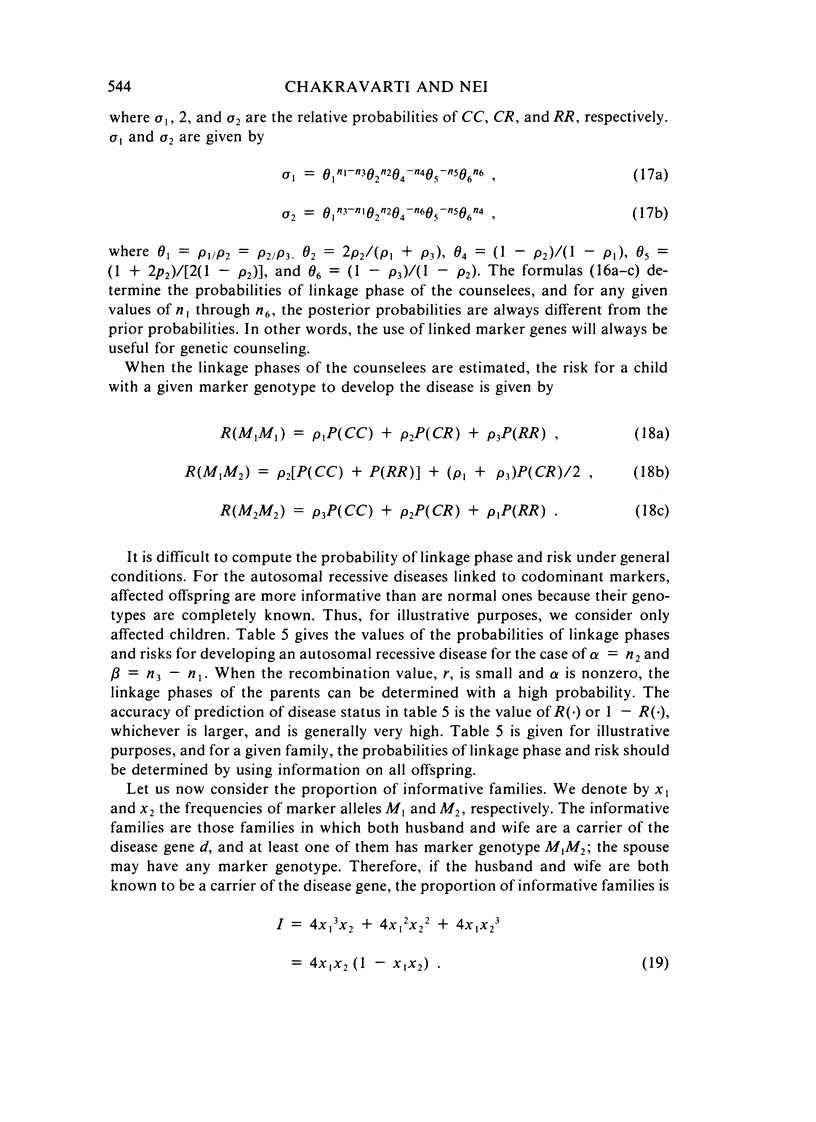
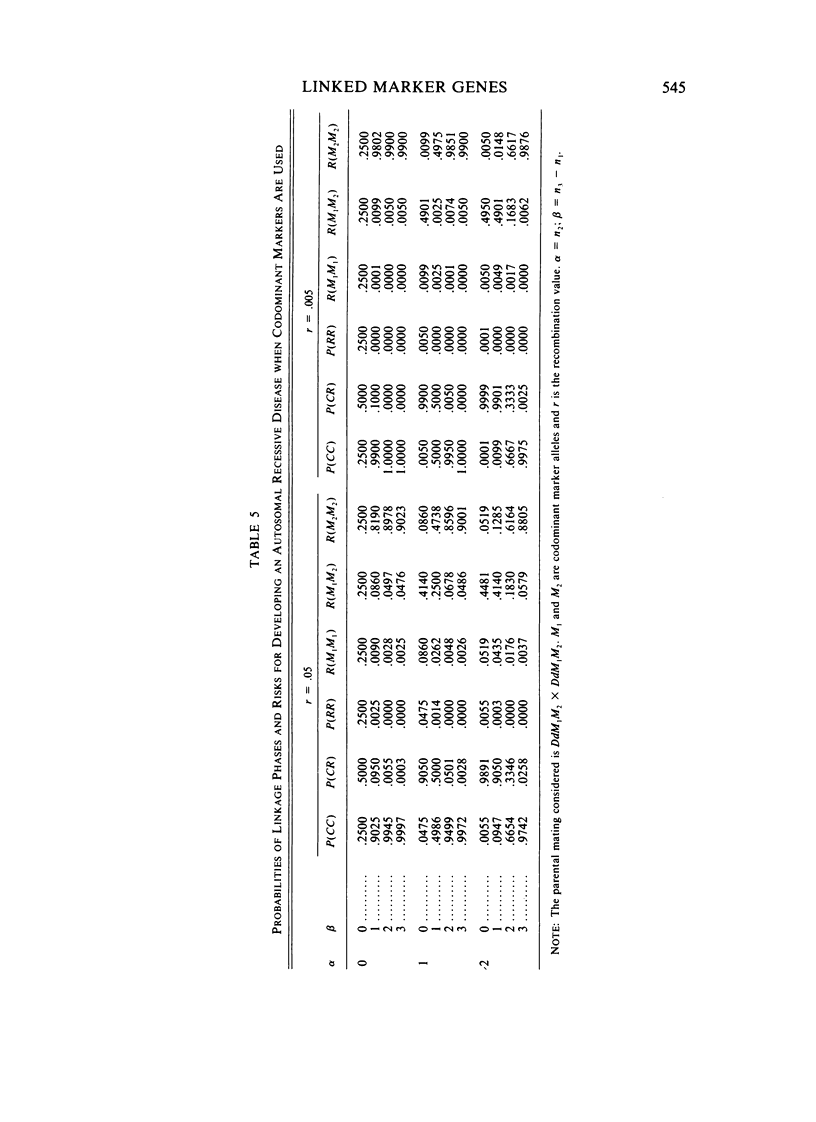
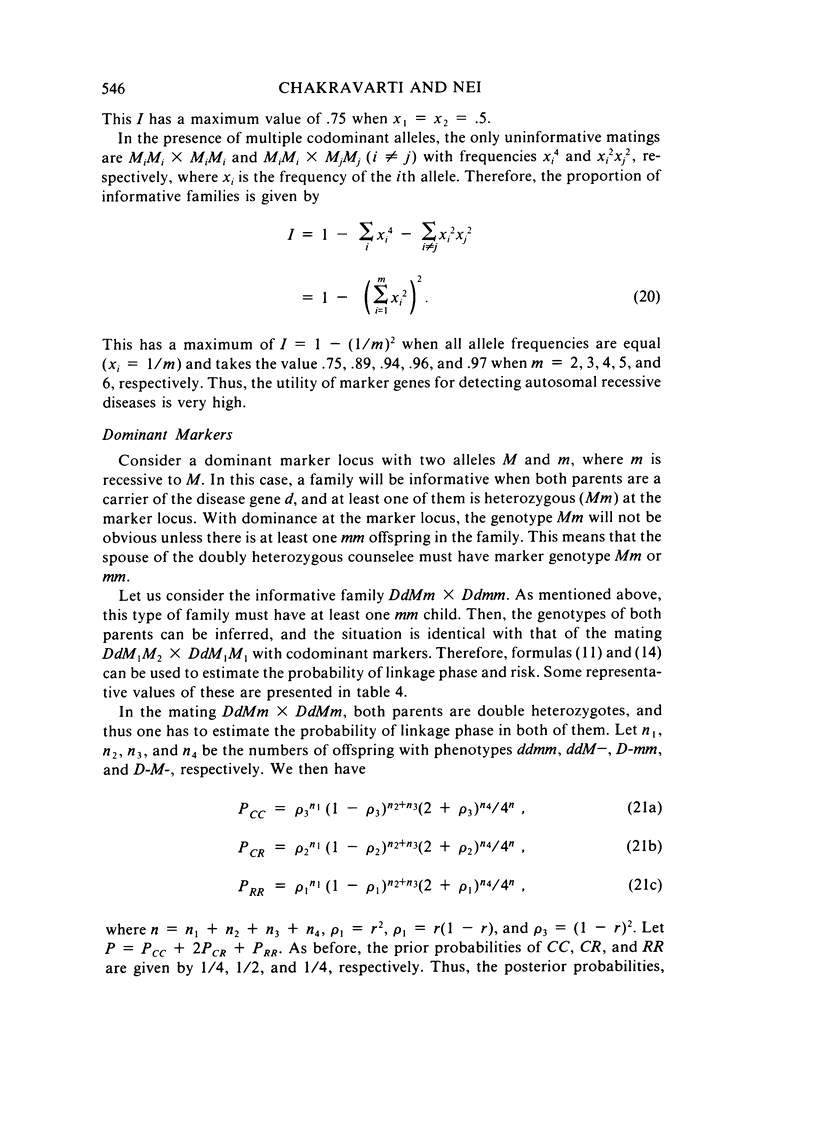

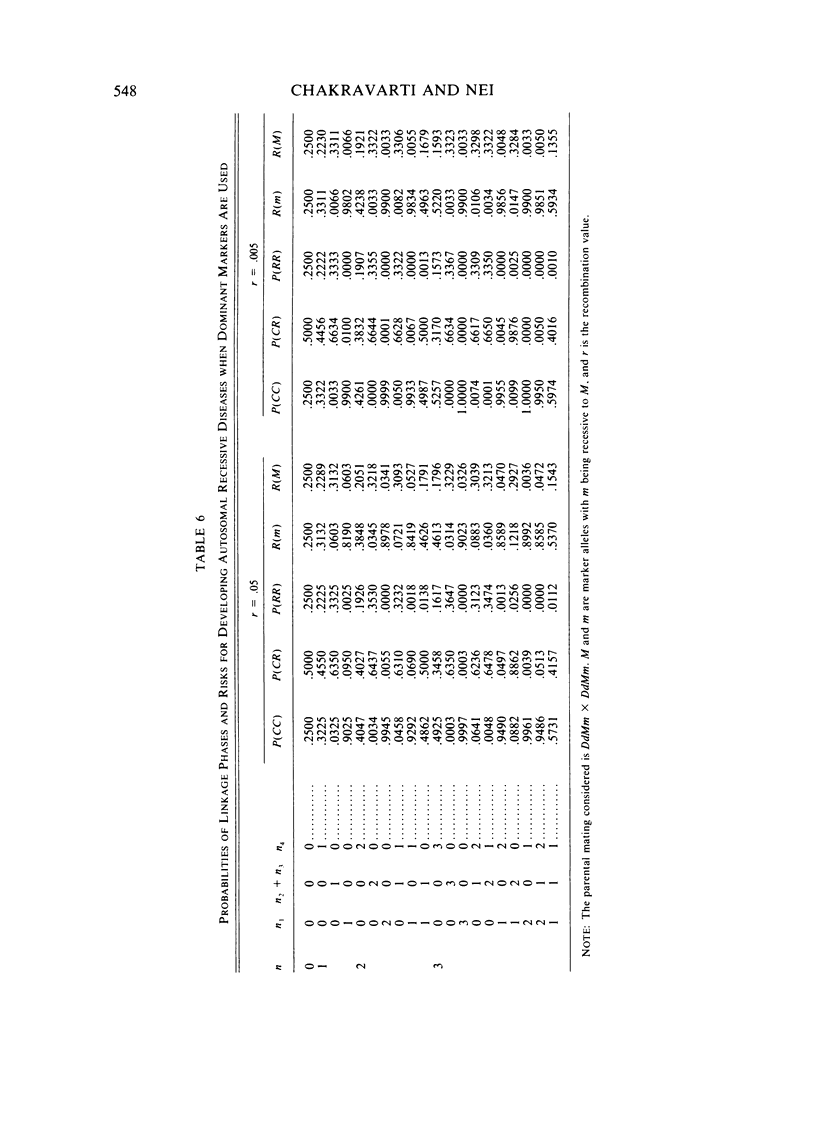
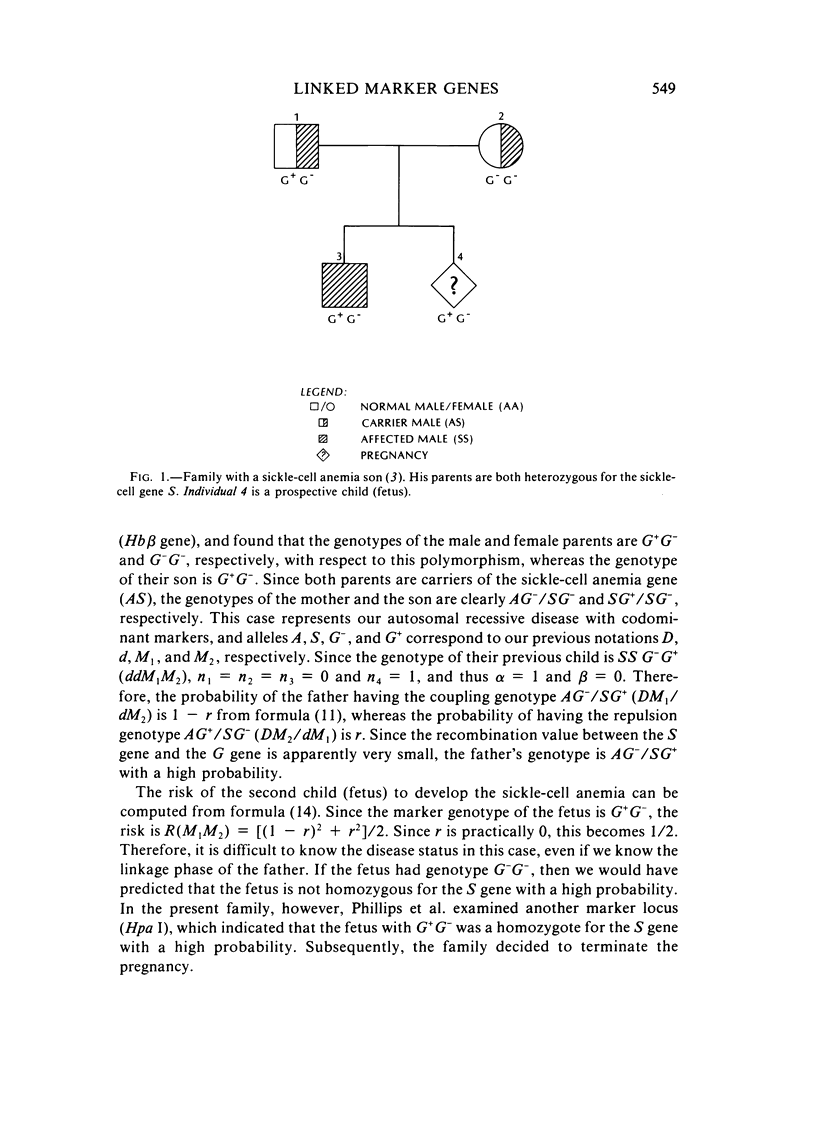
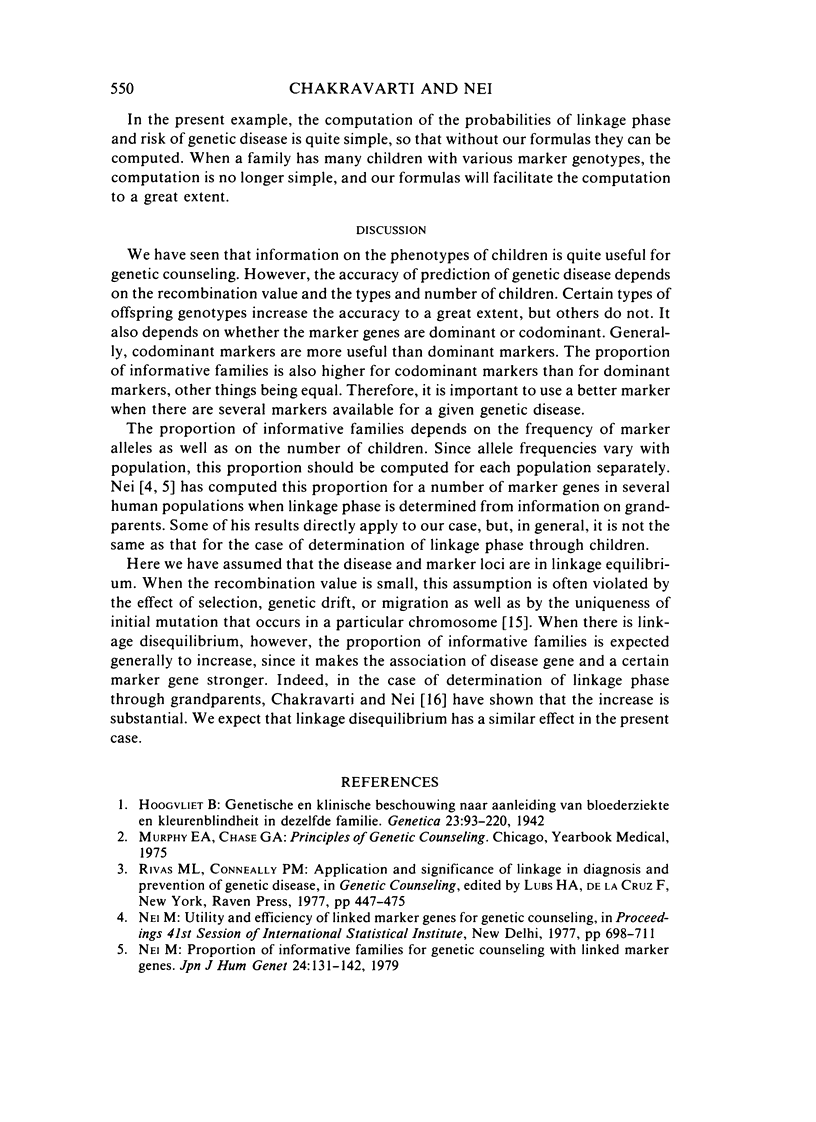
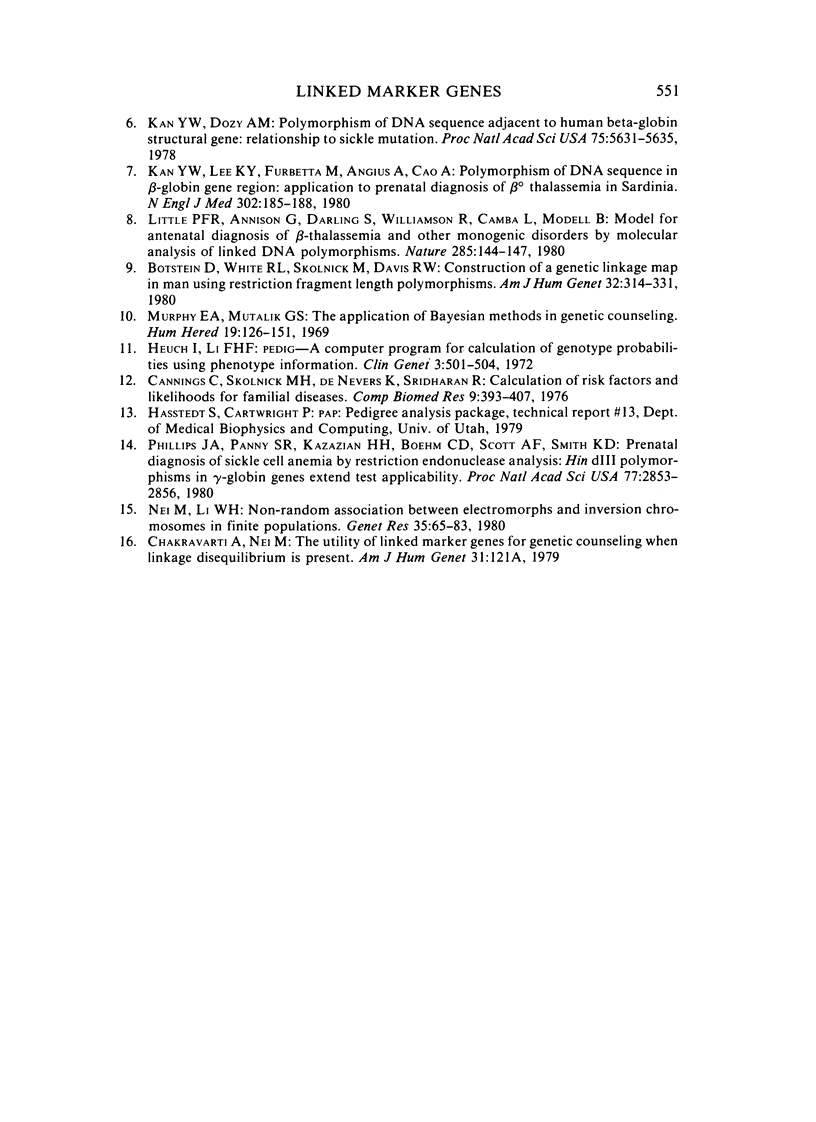
Selected References
These references are in PubMed. This may not be the complete list of references from this article.
- Botstein D., White R. L., Skolnick M., Davis R. W. Construction of a genetic linkage map in man using restriction fragment length polymorphisms. Am J Hum Genet. 1980 May;32(3):314–331. [PMC free article] [PubMed] [Google Scholar]
- Cannings C., Skolnick M. H., de Nevers K., Sridharan R. Calculation of risk factors and likelihoods for familial diseases. Comput Biomed Res. 1976 Aug;9(4):393–407. doi: 10.1016/0010-4809(76)90058-6. [DOI] [PubMed] [Google Scholar]
- Heuch I., Li F. H. PEDIG--a computer program for calculation of genotype probabilities using phenotype information. Clin Genet. 1972;3(6):501–504. doi: 10.1111/j.1399-0004.1972.tb01488.x. [DOI] [PubMed] [Google Scholar]
- Kan Y. W., Dozy A. M. Polymorphism of DNA sequence adjacent to human beta-globin structural gene: relationship to sickle mutation. Proc Natl Acad Sci U S A. 1978 Nov;75(11):5631–5635. doi: 10.1073/pnas.75.11.5631. [DOI] [PMC free article] [PubMed] [Google Scholar]
- Kan Y. W., Lee K. Y., Furbetta M., Angius A., Cao A. Polymorphism of DNA sequence in the beta-globin gene region. Application to prenatal diagnosis of beta 0 thalassemia in Sardinia. N Engl J Med. 1980 Jan 24;302(4):185–188. doi: 10.1056/NEJM198001243020401. [DOI] [PubMed] [Google Scholar]
- Little P. F., Annison G., Darling S., Williamson R., Camba L., Modell B. Model for antenatal diagnosis of beta-thalassaemia and other monogenic disorders by molecular analysis of linked DNA polymorphisms. Nature. 1980 May 15;285(5761):144–147. doi: 10.1038/285144a0. [DOI] [PubMed] [Google Scholar]
- Nei M., Li W. H. Non-random association between electromorphs and inversion chromosomes in finite populations. Genet Res. 1980 Feb;35(1):65–83. doi: 10.1017/s001667230001394x. [DOI] [PubMed] [Google Scholar]
- Nei M. Proportion of informative families for genetic counseling with linked marker genes. Jinrui Idengaku Zasshi. 1979 Sep;24(3):131–142. doi: 10.1007/BF01888684. [DOI] [PubMed] [Google Scholar]
- Phillips J. A., 3rd, Panny S. R., Kazazian H. H., Jr, Boehm C. D., Scott A. F., Smith K. D. Prenatal diagnosis of sickle cell anemia by restriction and endonuclease analysis: HindIII polymorphisms in gamma-globin genes extend test applicability. Proc Natl Acad Sci U S A. 1980 May;77(5):2853–2856. doi: 10.1073/pnas.77.5.2853. [DOI] [PMC free article] [PubMed] [Google Scholar]


